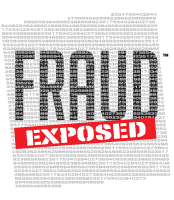The 2014 ACFE Report to the Nations estimates that the typical organization loses 5% of revenues each year to occupational fraud. So what do the perpetrators of these frauds look like? How can you identify them to better protect you or your clients’ organizations? While statistics can only tell you so much and outliers always exist, there are some common identifiable traits among fraudsters.
Profile of a Fraudster
In order for fraud to occur, the element of trust must be present. Without trust there is no opportunity, which is why only 7% of perpetrators committed fraud in their first year of employment while 53% had been with their organizations 5 years or more. Men are twice as likely to commit fraud as women and losses attributed to males are 123% higher than those attributed to women. While 52% of frauds are committed by people between 31 – 45 years of age, the average loss per fraud increases as age increases, with the mean loss for frauds perpetrated by those over 60 coming in at $450,000 while the frauds of those younger than 26 had a mean loss of $35,000.
Behavioral Red Flags
Certain behaviors have been identified as warning signs that fraud may be occurring. In 92% of cases perpetrators exhibited one of these, and in 64% of cases multiple behavioral red flags were present. The top 5 identified behaviors are listed below with their frequency of occurrence:
- Living beyond one’s means – 43.8% of fraud cases.
- Experiencing personal financial difficulties – 33% of fraud cases.
- Expressing unusually close association with vendor or customer – 21.8% of fraud cases.
- Exhibiting control issues / unwillingness to share duties – 21.1% of fraud cases.
- Possessing a “wheeler-dealer” attitude – 18.4% of fraud cases.
What Can You Do?
Get to know your employees, their lifestyles and what is going on in their lives. And as always, remain vigilant.
All statistical information was sourced from the 2014 ACFE Report to the Nations on Occupational Fraud and Abuse. Its findings were based on data compiled from 1,483 cases of occupational fraud as reported by the Certified Fraud Examiners who investigated them.

